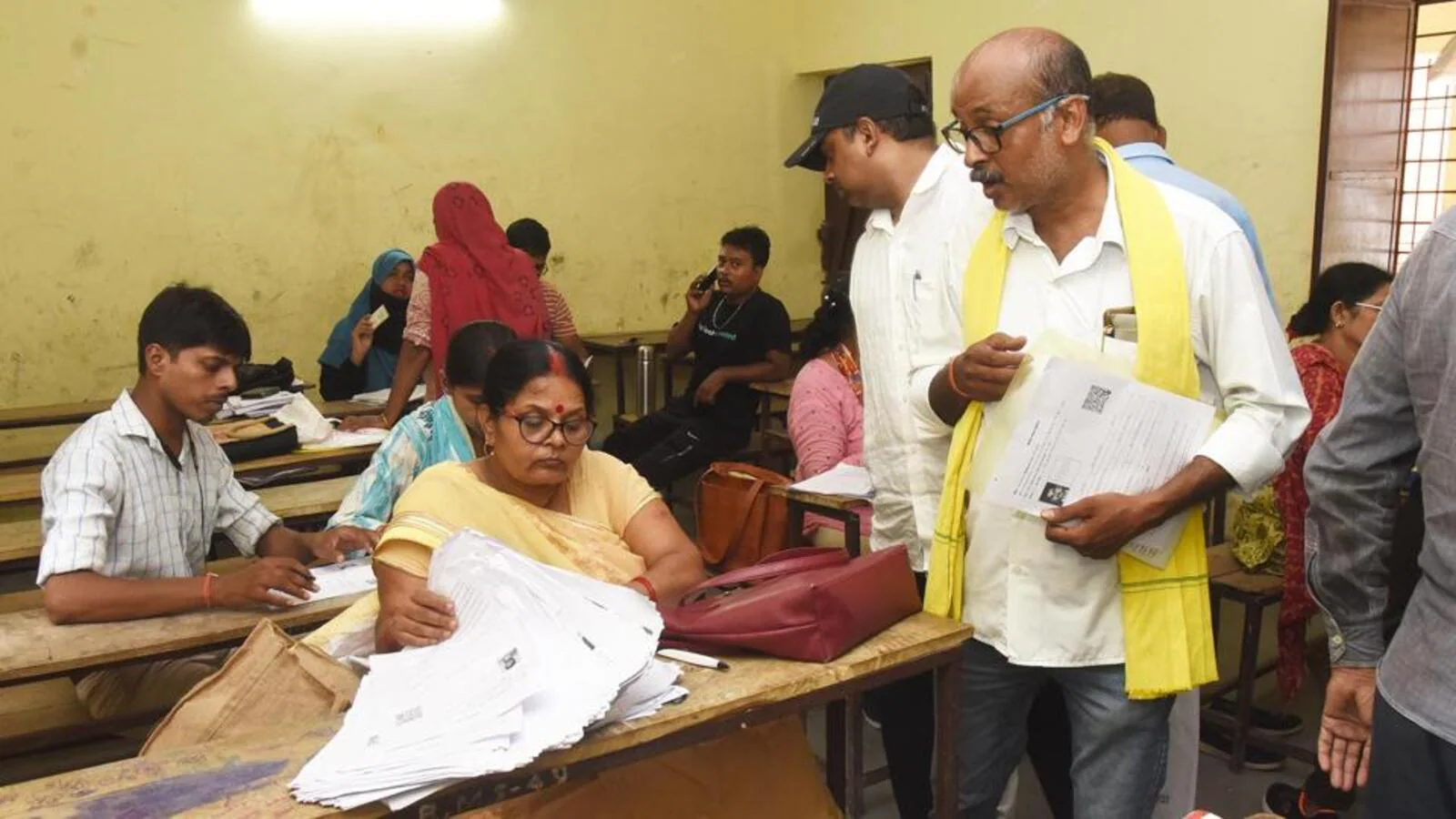
Gopalganj, Kishanganj see max share of SIR deletions
How did your country report this? Share your view in the comments.
Diverging Reports Breakdown
Gopalganj, Kishanganj see max share of SIR deletions
The Election Commission of India removed roughly 6.56 million names from the draft Bihar electoral roll published on Friday on account of deaths, permanent shifts and multiple enrolment. The announcement came days after the controversial special intensive revision (SIR) in the state came to a close. Gopalganj district saw the maximum deletions (13.9%), followed by Kishanganj district (10.5%), Purnia district (9.7%), Madhubani (8.7%) and Bhagalpur (7.8%), according to an HT analysis. The final electoral roll will be published on September 30 for the assembly polls, scheduled later this year. The National Democratic Alliance won seven of the 10 assembly seats that saw maximum percentage of deletions in the 2020 assembly elections and the Opposition Grand Alliance won three, the HT analysis showed. The next hearing is on August 13, and the top court has warned against mass exclusions, saying it will step in in the event of mass deletions.
The announcement came days after the controversial special intensive revision (SIR) in the state came to a close; the poll watchdog said that genuine names can be added till September 1 and a verification will be done in case an objection is raised for a name.
In absolute numbers and compared with the electoral roll before SIR began, ECI data showed Patna district saw the highest deletion of 395,500 voters, followed by Madhubani district (352,545), East Champaran district (316,793) and Gopalganj district (310,363).
But in percentage terms as against the 2024 Lok Sabha electoral roll, Gopalganj district saw the maximum deletions (13.9%), followed by Kishanganj district (10.5%), Purnia district (9.7%), Madhubani (8.7%) and Bhagalpur (7.8%), according to an HT analysis.
In terms of assembly constituencies, the highest percentage deletion was in Gopalganj assembly seat, followed by Kuchaikote seat, Motihari seat, Kishanganj seat, Barauli seat, and Purnia seat, the HT analysis showed.
Among the 10 assembly seats that saw the maximum percentage of deletions, the ruling National Democratic Alliance won seven in the 2020 assembly elections and the Opposition Grand Alliance won three, the HT analysis showed.
ECI said of the 6.5 million names missing from the rolls, deaths accounted for 2.2 million, people who permanently shifted or not found accounted for 3.6 million and people enrolled in multiple places accounted for 700,000.
In all, the draft electoral roll shrunk from 78.9 million to 72.4 million, ECI said.
“In their endeavour to reach each village, each ward, each house and add the name of each eligible elector to the draft electoral roll, the CEO of Bihar; DEOs of all 38 districts; EROs of all 243 assembly constituencies, 2,976 AEROs; BLOs of 90,712 polling booths, lakhs of volunteers and the 1.60 Lakh BLAs nominated by all the 12 political parties have carried out the task with full responsibility,” the poll body said in a statement.
The first phase of SIR ended on July 26. The new draft electoral roll was published on Friday, which is also when the month-long claims and verification process began. The final electoral roll will be published on September 30 for the assembly polls, scheduled later this year.
The number of deletions possibly represent the largest single potential removal of voters from any state’s electoral rolls in recent memory, a move the poll panel has defended as being necessary in the Supreme Court to maintain the sanctity of elections.
The exercise began on July 1.
During SIR, those who have their name in the 2003 voter roll could just cite that extract. For others, there were three buckets (those born before 1987 could just give their own identity proof, those born between 1987 and 2004 had to provide their own proof plus documents of either parent, and those born after 2004 had to provide documents for themselves as well as both parents. Voters could submit one of 11 listed documents, which didn’t include Aadhaar, voter ID or ration card.
Opposition MPs have demonstrated against the exercise in Parliament, alleging it is an affront to electoral democracy. But ECI has dismissed these allegations. The Supreme Court has earlier refused to stay the exercise but asked the commission to consider accepting Aadhaar cards and voter IDs as supporting documents. The next hearing is on August 13, and the top court has warned against mass exclusions, saying it will step in.
ECI said from August 1 to September 1 will be the time of claims and objections. “During this period, to add the name of any eligible elector or to delete the name of any ineligible elector, any elector or any political party, can file claims and objections in a prescribed form before the concerned ERO,” the body said.
“All eligible electors are appealed to check their names in the draft list, and if their name does not exist in the list, they should fill and submit Form 6 along with the declaration form,” the body added.
ECI said that the SIR draft copies were given to representatives of all recognised political parties. Chief electoral officer, Bihar Vinod Singh Gunjiyal, also held a meeting with the representatives of political parties on Friday evening in Patna.
Rashtriya Janata Dal spokesperson Chittaranjan Gagan, who attended the meeting on Friday, said that it was very surprising that 6.5 million names were deleted without giving them any notice. “As per norms and rules, any elector’s name can be deleted from the rolls only after giving notice. How can the ECI delete such a big number of names on the pretext of permanently shifting or deaths. This is not fair, We will get the rolls checked by our own people,” Gagan said.
BJP officials did not respond to requests seeking comment on the matter.
